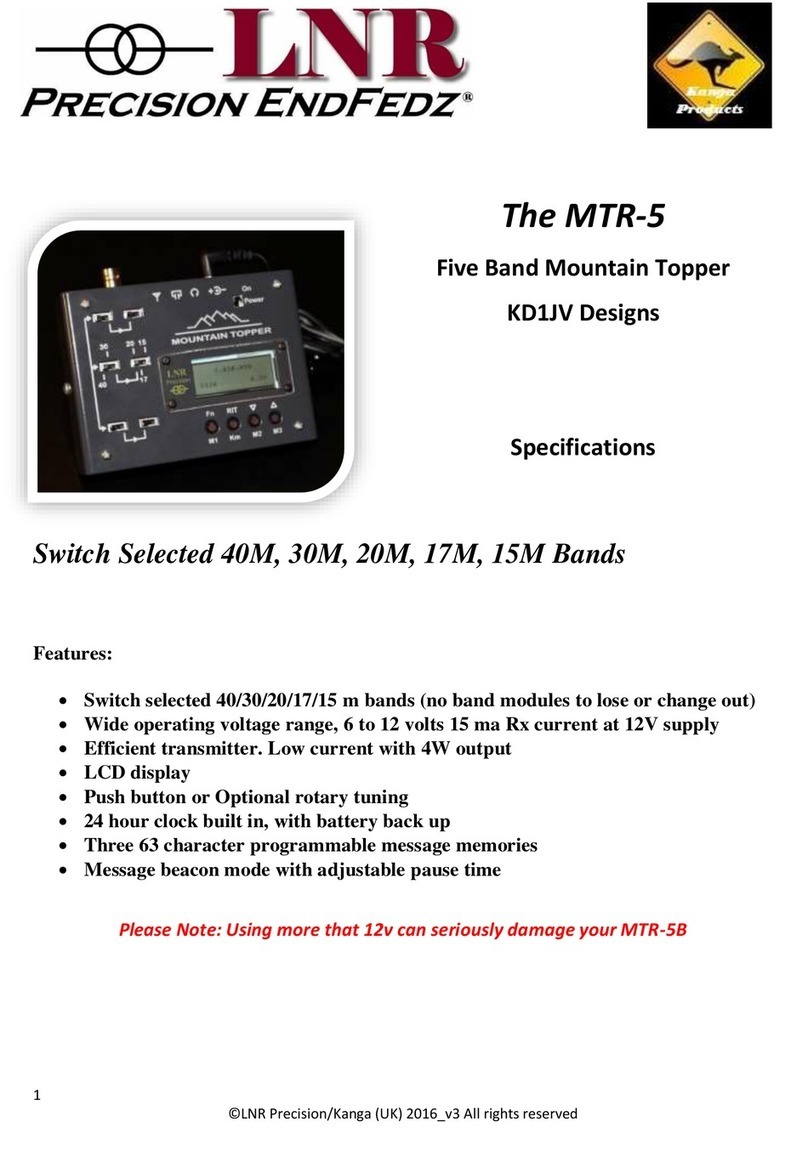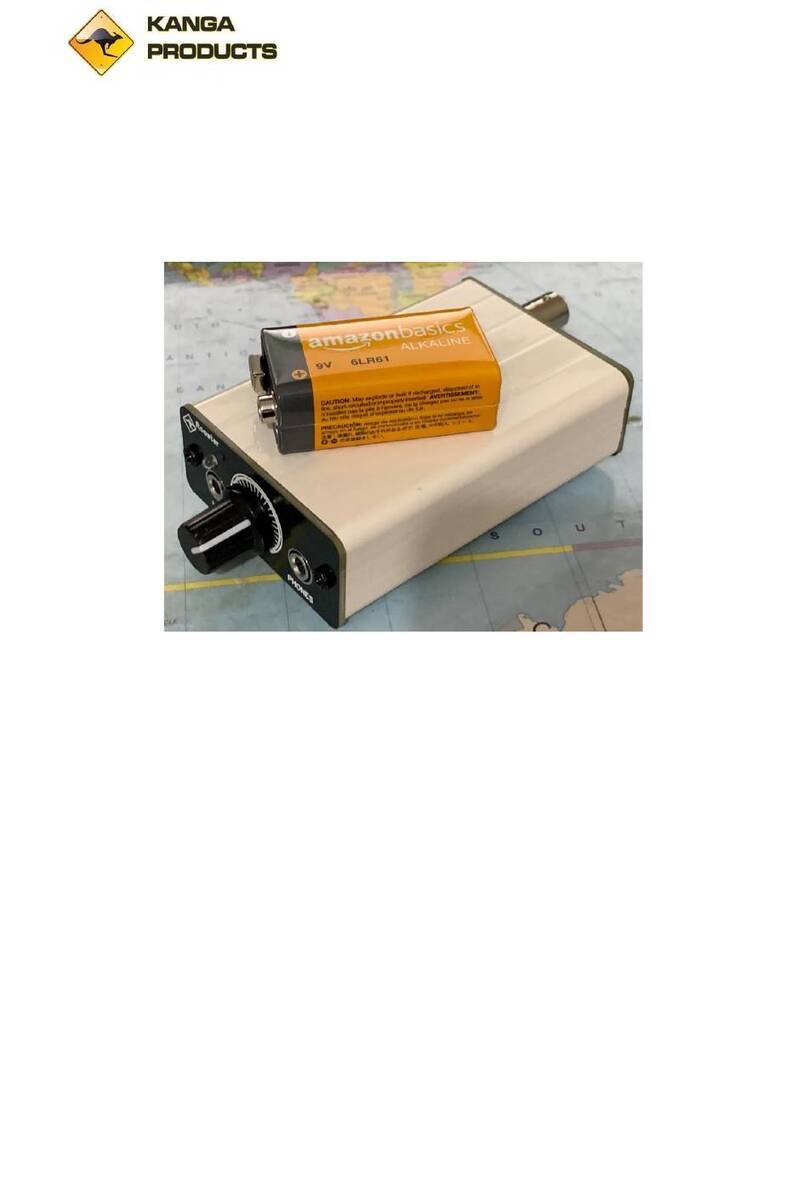
©Kanga Products 2001 –2016 All rights reserved www.kanga-products.co.uk
The FOXX-3
20m QRP
TRANSCEIVER
In the summer 1983 issue of SPRAT, the journal of the G-QRP Club, there appeared a design for an elegantly simple
QRP transceiver called the Foxx. Designed by George Burt GM3OXX, the Foxx used just five transistors and employed
the PA transistor as the detector for the receiver.
The FOXX-3 by Derek Alexander G4GVM was published in the spring 1999 issue
of SPRAT. While based on the original FOXX, it had a few refinements to make
operation easier: Automatic transmit/receive change over (semi-break-in),
sidetone and built in harmonic filter. Derek has kindly given Kanga Products
permission to produce the FOXX-3 in kit form.
This kit contains a high quality fibreglass printed circuit board with component
positions printed in white, all board mounted components, a power cable and
detailed step by step instructions. To build the kit you will need a soldering iron, solder, wire cutters and fine tipped
pliers. To operate the FOXX-3 transceiver you will need a pair of headphones, 12v DC supply (a battery is ideal) and
antenna a tuning unit for the 20m Band. A power meter would be useful to. A separate Morse key can be used, but
a board mounted key is provided.
The FOXX-3 printed circuit board has been designed to give the constructor a number of choices:
1. Enclosure.
a. The board can be fitted into an ‘Altoids’™ mint tin. All connections are made vertically from the board so
the transceiver is concealed when the lid is closed. Mounting screws may be fitted through holes drilled
into the floor of the tin. Alternatively the board maybe carried in the tin and removed for operation.
b. The board may be secured to a chassis using screws through the 3.2mm holes provided. Sizes 6BA, ISO
3mm and 4-40 UNC are suitable.
2. Headphone connection (Low impedance “personal stereo type).
a. 3.5mm Mono or stereo Jack plug (track break needed if using mono plug).
b. 2-pin 0.1” header plug.
3. Morse Key or Keyer connection.
a. 3.5mm Jack plug, sleeve connected to 0v
b. 2-pin 0.1” header plug
c. S small push button (supplied) maybe fitted directly to the board.
If you intend to mount the board on screws, use it as a template to mark the hole positions before any
components are soldered in place.






























